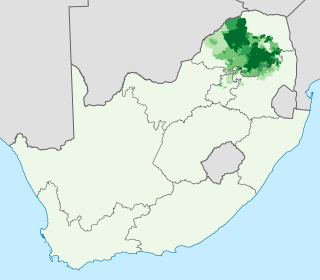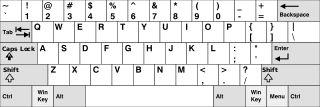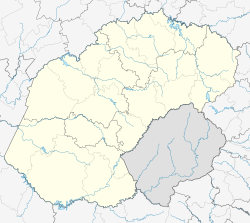
Northern Sotho, or Sesotho sa Leboa as an endonym, is a Sotho-Tswana language spoken in the northeastern provinces of South Africa. It is sometimes referred to as Sepedi or Pedi, its main dialect, through synecdoche.

The population of South Africa is about 58.8 million people of diverse origins, cultures, languages, and religions. The South African National Census of 2011 was the most recent census held; the next will be in 2022.

Coloureds refers to members of multiracial ethnic communities in Southern Africa who may have ancestry from more than one of the various populations inhabiting the region, including African, Asian, as well as European. South Africa's Coloured people are regarded as having some of the most diverse genetic background. Because of the vast combination of genetics, different families and individuals within a family may have a variety of different physical features.
Sotho or Sesotho is a Southern Bantu language of the Sotho-Tswana (S.30) group, spoken primarily by the Basotho in Lesotho, where it is the national and official language; South Africa, where it is one of the 11 official languages; and in Zimbabwe where it is one of 16 official languages.

The Sotho people, also known as the Basuto or Basotho, are a Bantu nation native to southern Africa. They split into different ethnic groups over time, due to regional conflicts and colonialism, which resulted in the modern Basotho, who have inhabited the region of Lesotho, South Africa since around the fifth century CE.

The Free State is a province of South Africa. Its capital is Bloemfontein, which is also South Africa's judicial capital. Its historical origins lie in the Boer republic called the Orange Free State and later Orange Free State Province.

North West is a province of South Africa. Its capital is Mahikeng. The province is located to the west of the major population centre of Gauteng and south of Botswana.

At least thirty-five languages indigenous to South Africa are spoken in the Republic, eleven of which are official languages of South Africa: Ndebele, Pedi, Sotho, Swati, Tsonga, Tswana, Venda, Xhosa, Zulu, Afrikaans, and English, which is the primary language used in parliamentary and state discourse, though all official languages are equal in legal status. Unofficial languages are protected under the Constitution of South Africa, though few are mentioned by any name. South African Sign Language has legal recognition but is not an official language, despite a campaign and parliamentary recommendation for it to be declared one.

Kroonstad is the third largest city in the Free State and lies two hours' drive on the N1 from Gauteng. Maokeng is an area within Kroonstad, and is occasionally used as a synonym of the town itself. It is the second-largest commercial and urban centre in the Northern Free State, and an important railway junction on the main line from Cape Town to Johannesburg. Maokeng is Sesotho and means "place of the thorn trees ".

Witbank, officially Emalahleni, is a city situated on the Highveld of Mpumalanga, South Africa, within the Emalahleni Local Municipality. The name Witbank is Afrikaans for "white ridge", and is named after a white sandstone outcrop where wagon transport drivers rested. The city is known for its coal-mining in the surrounding region.

Warrenton is an agricultural town of approximately 22,588 people in the Northern Cape province of South Africa, situated 70 kilometres (40 mi) north of Kimberley on the Vaal River.

South African Bantu-speaking peoples are the majority of black South Africans. Occasionally grouped as Bantu, the term itself is derived from the word for "people" common to many of the Bantu languages. The Oxford Dictionary of South African English describes its contemporary usage in a racial context as "obsolescent and offensive" because of its strong association with white minority rule with their apartheid system. However, Bantu is used without pejorative connotations in other parts of Africa and is still used in South Africa as the group term for the language family.

Richmond County, also known as Staten Island is a borough of New York City, New York, United States. Staten Island is the least populated of the five boroughs with 475.000 people but is the third largest in area at 59 sq mi (153 km2).
Demographics of North Carolina covers the varieties of ethnic groups who reside in North Carolina and relevant trends.

Many languages are spoken, or historically have been spoken, in Zimbabwe. Since the adoption of its 2013 Constitution, Zimbabwe has 16 official languages, namely Chewa, Chibarwe, English, Kalanga, Koisan, Nambya, Ndau, Ndebele, Shangani, Shona, sign language, Sotho, Tonga, Tswana, Venda, Xhosa. The country's main languages are Shona, spoken by over 70% of the population, and Ndebele, spoken by roughly 20%. English is the country's lingua franca, used in government and business and as the main medium of instruction in schools. English is the first language of most white Zimbabweans, and is the second language of a majority of black Zimbabweans. Historically, a minority of white Zimbabweans spoke Afrikaans, Greek, Italian, Polish, and Portuguese, among other languages, while Gujarati and Hindi could be found amongst the country's Indian population. Deaf Zimbabweans commonly use one of several varieties of Zimbabwean Sign Language, with some using American Sign Language. Zimbabwean language data is based on estimates, as Zimbabwe has never conducted a census that enumerated people by language.

London has, in recent decades, become one of the most ethnically diverse cities in the world. Over 300 languages are spoken in Greater London.

The distribution of white South Africans is fairly evenly spread. They currently make up 8-9% of the total population and are around 4.5–5 million. They are found in large numbers in practically every province in South Africa but always as a minority. They are high in concentration in large cities.

Moqhaka is a municipality in the Fezile Dabi District, Free State Province, South Africa. In 2001 the population was 267 881 with a total area of 7925 km ². The seat of local government is Kroonstad. The community name is the South-Sotho-word for "crown".

Matjhabeng Local Municipality is a local government serving an administrative area in the Lejweleputswa District of the Free State in South Africa. The municipality services Welkom, Virginia, Odendaalsrus and Allanridge. The name is a Sesotho word meaning "where nations meet". It is derived from the migrant labour system where people from various countries like Lesotho, Mozambique, etc. meet to work in the mines of the Goldfields.

Racial groups in South Africa have a variety of origins. The racial categories introduced by Apartheid remain ingrained in South African society with South Africans continuing to classify themselves, and each other, as belonging to one of the four defined race groups. Statistics South Africa asks people to describe themselves in the census in terms of five racial population groups. The 2011 census figures for these categories were Black South African at 76.4%, White South African at 9.1%, Coloured South African at 8.9%, Indian South African at 2.5%, and Other/Unspecified at 0.5%.




















